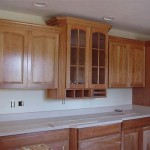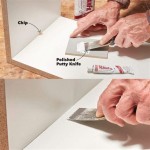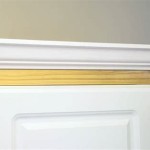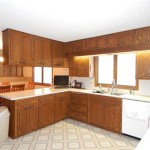How To Cut Costs On Kitchen Remodel
Kitchen remodels are a popular home improvement project, offering significant returns on investment and improved functionality. However, the cost can quickly escalate. Careful planning and strategic decision-making can significantly reduce expenses without compromising the desired outcome.
Refacing vs. Replacing Cabinets: One of the most substantial expenses in a kitchen remodel is cabinetry. Instead of full replacement, consider refacing existing cabinets. This involves replacing doors, drawer fronts, and hardware while retaining the existing cabinet boxes. Refacing can save up to 50% compared to new cabinets, while still dramatically updating the kitchen's appearance.
Countertop Alternatives: Granite and quartz are popular countertop choices but can be expensive. Explore cost-effective alternatives like laminate, butcher block, or solid surface materials. These options offer durability and style at a lower price point. Concrete countertops can also be a budget-friendly option if poured in place, though they require sealing and regular maintenance.
Smart Appliance Shopping: Appliances contribute significantly to the overall remodel budget. Look for sales, discounts, and rebates. Consider purchasing floor models or slightly imperfect appliances, often offered at reduced prices. Exploring less-known brands can also yield significant savings without sacrificing functionality.
DIY Where Possible: Labor costs often constitute a large portion of remodeling expenses. Homeowners with DIY skills can tackle certain tasks themselves, such as demolition, painting, and installing backsplashes. This requires careful assessment of one’s abilities and commitment to completing the project correctly and safely. Even small DIY tasks can accumulate considerable savings.
Retain the Existing Layout: Changing the kitchen layout often involves rerouting plumbing and electrical lines, significantly increasing costs. Maintaining the current layout simplifies the remodel and avoids these added expenses. Focus on cosmetic updates and efficient use of the existing space to maximize the impact without structural changes.
Strategic Lighting Upgrades: Lighting plays a crucial role in a kitchen's ambiance and functionality. Instead of extensive rewiring, explore cost-effective lighting solutions. Under-cabinet lighting, pendant lights, and strategically placed track lighting can create a dramatic effect without requiring major electrical work.
Open Shelving Options: Open shelving can be a stylish and budget-friendly alternative to upper cabinets. This option provides easy access to frequently used items and creates a sense of spaciousness. Combining open shelving with a few closed cabinets can offer a balance of aesthetics and practicality while reducing costs.
Focus on Cosmetic Updates: A fresh coat of paint, new hardware, and updated faucets can dramatically improve a kitchen's appearance without breaking the bank. These relatively inexpensive changes can create a significant visual impact and refresh the space's overall feel.
Careful Planning and Budgeting: Thorough planning is essential for cost-effective kitchen remodeling. Develop a detailed budget incorporating all anticipated expenses. Research material costs, obtain multiple quotes from contractors, and prioritize desired features. A well-defined budget helps track spending and avoid overruns.
Shop Around for Materials: Don't settle for the first price quoted. Compare prices from different suppliers, including online retailers and local home improvement stores. Consider salvaged materials and remnants for unique and budget-friendly options.
Phased Approach: If budget constraints are significant, consider a phased approach to the remodel. Prioritize essential updates first and complete less critical projects later. This allows for cost spreading over time and avoids financial strain.
Time Management: Delays in the project timeline can lead to increased costs. Ensure a clear schedule and maintain communication with contractors and suppliers to avoid unnecessary hold-ups. Efficient time management keeps the project moving forward and minimizes potential expenses.
Value Engineering: Collaborate with contractors to identify cost-saving opportunities without compromising quality. This involves exploring alternative materials, simplifying design elements, and optimizing construction methods. Value engineering can lead to significant cost reductions while maintaining the overall project goals.
Prioritize Needs vs. Wants: Distinguishing between needs and wants is crucial for budget management. Focus on essential updates that improve functionality and address existing issues. Luxury features and purely aesthetic upgrades can be postponed or eliminated to control costs.
By implementing these strategies, homeowners can significantly reduce the cost of their kitchen remodel while still achieving a beautiful and functional space. Careful planning, smart shopping, and strategic decision-making empower homeowners to create their dream kitchen within a realistic budget.

Estimating The Cost Of A Kitchen Remodel Budget First

The Cost Of A Kitchen Remodel Understanding Your Budget

Kitchen Remodeling Cost Guide 2024 Sweeten Com

How Much Does A Kitchen Remodel Cost Forbes Home

10 Kitchen Remodeling Ideas On A Budget Modernize

How Much Does A Kitchen Remodel Cost 2024 Data Angi

5 Tips For Reducing Your Kitchen Remodel Budget Boger Cabinetry

Kitchen Remodel Cost Where To Spend And How Save

Small Kitchen Remodel Costs And Budgeting Explained

2024 Kitchen Remodel Cost Breakdown Recommended Budgets Roi And More
Related Posts








